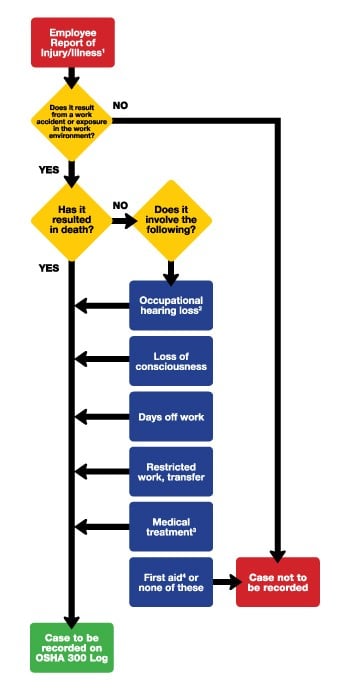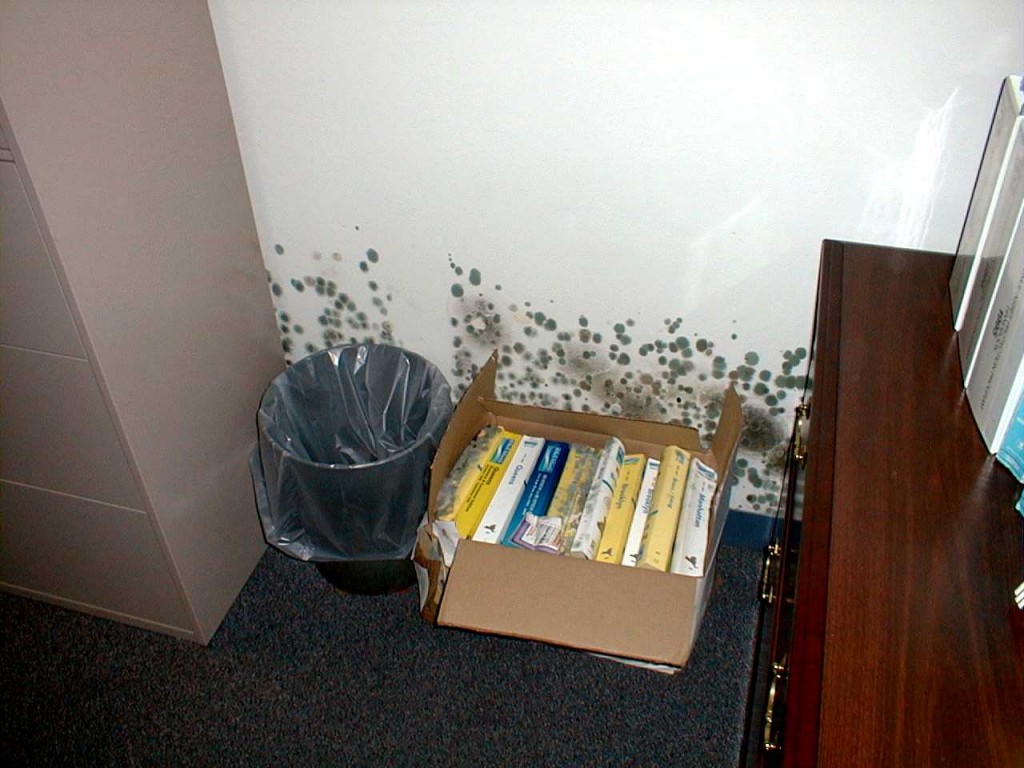Employers are responsible for recording all work-related injuries and illnesses. If you are unable to determine if an injury or illness is recordable after you have completed the investigation, and evaluated all available documents, it is recommended that you contact the OSHA area office nearest you.
Read MoreEnvironmental Health and Safety Blog | EHSWire
Topics: OSHA, OSHA Recordkeeping regulation (29 CFR 1904), severe work-related injury and fatality reporting, OSHA Compliance, OSHA Hazard Communication Standard, reporting, Medical Records, OSHA Injury and Illness Recordkeeping and Reportin
The Occupational Safety and Health Administration’s (OSHA) recordkeeping requirements have been in place since 1971 (29 Code of Federal Regulations CFR Part 1904). The requirements were updated in 2002 to make it easier for employers to comply. OSHA has again updated the recordkeeping rule for 2015 to include two key changes.
Read MoreTopics: OSHA, OSHA Recordkeeping regulation (29 CFR 1904), health and safety, OSHA Compliance, Occupational Health, health hazards, occupational health and safety, reporting, Medical Records, OSHA Injury and Illness Recordkeeping and Reportin, OSHA 300A Annual Recordkeeping Summary Form, incident investigation
OSHA Recordkeeping 300A Its For You and the Rest of the Country!
Posted by Shivi Kakar
Did you know that the OSHA Illness and Injury Summary Log, 300A, is used for more than just recordkeeping at your site? By documenting your companys illness and injuries properly, you shape OSHAs future initiatives! Specifically, OSHA Summary 300A Forms are gathered by the OSHA Data Initiative (ODI) to help direct OSHA programs and measure its own performance.
How does OSHA get this information?
OSHA gets these data from two sources:
- As part of an annual survey, the Bureau of Labor Statistics (BLS) sends injury and illness survey forms to randomly selected employers and uses the information to create the Nation's occupational injury and illness statistics.
- The OSHA Data Initiative mails its annual survey (in June) that collects data on injuries and acute illnesses attributable to work-related activities in private-sector industries from approximately 80,000 establishments in selected high hazard industries. In 2010, OSHA also collected this information from approximately 20,000 establishments in the construction industry in addition to the non-construction establishments. The Agency uses these data to calculate establishment-specific injury/illness rates, and in combination with other data sources, to target enforcement and compliance assistance activities. Traditionally, OSHA collects data from the establishments that meet the following categories, but as we saw in 2010, OSHA can expand these criteria.
- Non-construction industries with 40 or more employees are chosen randomly
- Non-respondents in the previous collection year
- Site with an inspection or consultation visit for performance measurement
- DART rate (days away from work, restriction or transfer) of 7.0 or higher in previous data collection
Does the data really help OSHA?
Now that OSHA has the data from BLS and the ODI, the Agency uses the information to
- Calculate and establish specific injury and illness incidence rates
- Develop targeted intervention programs (i.e., inspections and enforcement action)
- Assist inspectors so that they can direct their efforts to the higher incidents hazards that are hurting workers.
- Measure the success of agency efforts to reduce the number of workplace injuries and illnesses in select high-hazard industries
- Provide the base data for the BLS Annual Survey of Occupational Injuries and Illnesses, the Nation's primary source of occupational injury and illness data.
What is your role?
Be a savvy and educated reporter of your companys illness and injury information. Understanding the OSHA 300 log reporting requirements will ensure an accurate portrayal of worker health and safety as well as maintaining OSHA compliance. Can you answer the following questions?
- How do I complete the OSHA 300 Log and Form 301?
- Am I required to post an OSHA Form 300A ? How do I know if I am exempt?
- What is classified as a work-related illness or injury?
- How do I fill the forms in correctly without over-reporting?
- Do I have to fill in the form if I have no recordable injuries or illnesses in the previous year? What are the rules for posting?
- Once the form is filled in and submitted, if requested by BLS or OSHA, are there other legal requirements I should know?
Not convinced that recordkeeping is important?
Besides providing a visible record of worker safety benchmarks and improvements (or worse, tragedies and reversals), establishments that are requested to but fail to submit a completed data collection form may be subject to OSHA enforcement actions, including the issuance of a citation and assessment of penalties! So, take the time understand OSHAs reporting requirements and implement them correctly it affects your company and the nations workers.
If you need assistance with OSHA recordkeeping, Emilcott offers a variety of ways to help your business stay in compliance from a webinar-based course that outlines the rules and regulations to the development of complete health and safety plans. Or, if you have an OSHA recordkeeping question, just ask us!
Topics: Emilcott, OSHA, health and safety, General Industry H&S, OSHA Compliance, General EHS, Construction H&S, Compliance, worker safety, Occupational Health, Occupational Safety, Webinar, reporting, regulation, Medical Records, BLS, Bureau of Labor Statistics
An effort to raise awareness - You never know when an emergency is going to happen. You must be and stay prepared for the unexpected at home, in school, at the workplace and in your community. Some emergencies which may happen: A Biological Threat , Blackouts, Earthquakes, Explosions, Fires, Floods, Hurricanes, Influenza Pandemic, Tornadoes, Wildfires, Winter Storms
Follow these simple steps for confidence during a disaster or crisis which may occur
1. Create a kit of emergency supplies (placing everything in a backpack is a great idea in case you have to evacuate quickly)
Items to include in your kit should be:
Copies of your important documents placed into a waterproof container
Birth certificates
Photo ids
Insurance cards
Copies of credit cards and ATM cards
Extra set of keys to your house and car
Cash or Travelers checks (stored in a waterproof container)
A weeks supply of medications and a list of the medications you take
Dosages, doctors names, doctors phone numbers
Flashlight and extra batteries
First aid kit
Battery operated radio and extra batteries
Bottled water and non-perishable food
Personal Toiletries
Whistle
2. Create an emergency stash of Items to keep in your home (in case you are told to stay indoors)
Items to include should be:
Three days' supply of water
Rule of thumb: a total of one gallon per person per day = 3 gallons per person
Manual (non-electric) can opener
Utensils
Three days' supply of canned, non-perishable, ready-to-eat food
Canned fruit, beans
Special Needs items:
Infant care items
Items for elderly family members
Items for relatives with disabilities
Items for your pets
Phone that does not require electricity
3. Make a plan for you and your family
Determine and practice:
Where to go where is your location to reunite
Church, school, or a community center are ideal public places?
How to find one another
** Each family member must carry contact information
Phone numbers for work, school and each family member
A name a phone number of a relative who lives out of state they can become your main number to call in case you get separated
How to use different routes to get to your meeting place
4. Stay Informed
Learn what could happen where you live
Learn how to respond to different emergencies
Learn about the emergency plans that your community has set up
Topics: Emergency Response, H&S Training, Hazardous Waste Management, emergency response training, Fire Safety, Medical Records
Topics: OSHA, health and safety, General Industry H&S, H&S Training, Hazardous Materials, Occupational Health, Occupational Safety, Fire Safety, Occupational Training, Lab Safety, Medical Records, NFPA
Medical Records: Employee Rights & Employer Responsibilities
Posted by Shivi Kakar
Topics: OSHA, health and safety, General Industry H&S, Construction H&S, H&S Training, Compliance, Occupational Health, Mold, Fire Safety, Medical Records








